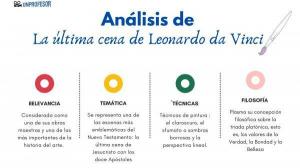6 most outstanding WORKS by Antoni TÀPIES
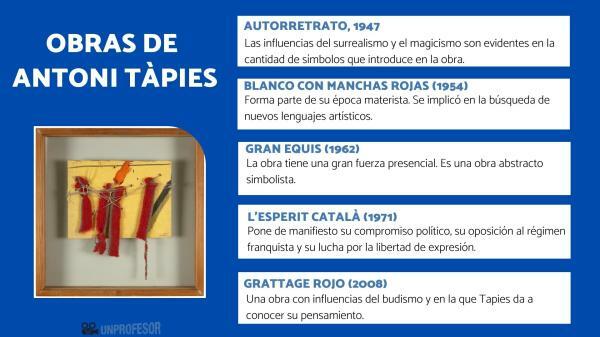
Antoni Tapies i Puig (Barcelona, December 13, 1923 - ibidem, February 6, 2012) is considered one of the most important artists of the second half of the 20th century. With an early artistic vocation, Tàpies began his career by linking himself to Catalan surrealism to later become one of the main representatives of informalism.
A painter, sculptor and art theorist who combined tradition and innovation between the abstract and symbolism, being a benchmark in the world of art and culture of the 20th century. In this lesson at unPROFESOR.com we bring you closer to the figure of Antoni Tàpies and his most outstanding works.
Index
- Characteristics of the work of Antoni Tàpies
- Self-portrait, 1947, one of Tapies' most important works
- Triptych, 1948
- White with Red Spots (1954)
- Big X (1962)
- L'esperit català (1971)
- Red Grattage (2008)
Characteristics of the work of Antoni Tàpies.
Between the main characteristics and stages of the work of Tàpies stand out:
- Tapies is a prolific artist and in constant experimentation.
- His early works are basically drawings, especially in India ink and portraits.
- He started his career with success as a figure of the surrealism Catalan.
- Starting in 1950 and on the occasion of his departure for Paris, Tapies entered informalism and materialism. After investigating how to apply matter to painting, Tàpies began in 1953 in materialism, following the influence of Jean Dubuflet, a great reference in that style.
- Following the postulates of that movement, Tapies introduces living texture, matter, into his work. Thus, they will appear in his works ropes, paper, marble dust, straw and sand. His paintings are thus a kind of bas-reliefs.
- His references at that time are Joan Miró, Kandinsky and Paul Klee.
- Tapies had as main influences Nietzsche's philosophy, Buddhism and Catalonia.
- In his works he uses cold, austere and earthy colors.
- His compositions take on the appearance of walls or walls in which letters, moons, geometric figures, asterisks, numbers, etc. appear.
- Tapies introduces textures such as cracks, bumps and breaks that resemble scenarios of the horrors of the Civil War, a terrible episode that he lived through and that will mark his life and his work. Some paintings full of expressiveness that connect with the iInformalism and American Abstract Expressionism.
- Also constant in the work of Tàpies is the presence of the body. Especially separate, schematic and deteriorated body parts.
- In the 1960s he was influenced by the pop-art and, starting in 1963, he began to introduce sewn and glued elements, creating highly textured paintings, with spots and great contrasts.
- At the end of the 1960s he incorporates fabrics, cubes, human figures and straw. Your firsts assemblagesof him date from these moments.
- The assemblages They are works of mixed technique in which the painter adds physical objects on a support, creating works of great interest. A conceptualist stage, with works full of irony, bordering on the absurd and in which he introduces fat and debris.
- At that time and with the arrival of democracy, Tapies created works with references to the history of Catalonia. From these years there is a large collection of posters and lithographs on political and social themes.
- • Another of the constants throughout his work is the use of geometric figures. An influence of Catalan Romanesque art.

Image: Alexandra of Argos
Self-portrait, 1947, one of Tapies' most important works.
From his first phase as a draftsman with Chinese ink stands out a self-portrait of the painter. A work in which the artist shows us his entire personal universe.
The influences of surrealism and magicism they are evident in the number of symbols that he introduces into the work, especially that Grail that he has in front of him.
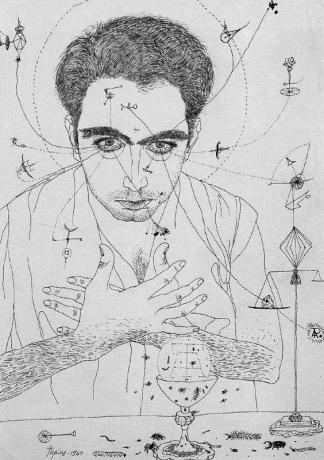
Triptych, 1948.
This is also one of the first works of the painter. A altarpiece in honor of a man buried in a burial mound as an Osiris resurrected by Isis. A surreal and magical work.
White with Red Spots (1954)
White with red spots It is another of the most important works by Tàpies and is part of his time materialist. In the painting he uses the mixed technique applying various materials.
Tàpies was involved in the search for new artistic languages. Thus, he not only worked with traditional pigments, but also included marble dust, earth, wood or fabrics in his works.
Some elements that he paints or tears getting textured works, rough and contrasting with the paint areas.

Big X (1962)
This work gave Tapies great fame, establishing himself as an international artist. Big X has a great symbolic load. It is a large canvas, 1.95 meters, the size of a boarded up door.
A rough composition in which he introduces a large cross and decomposing elements. The work has a great face-to-face force. It is an abstract symbolist work.
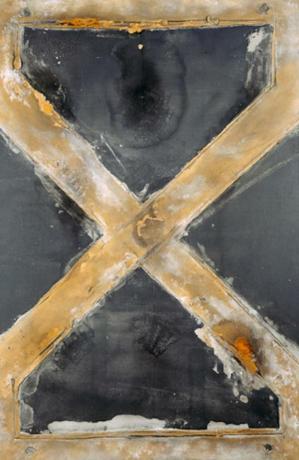
L'esperit català (1971)
The Catalan esperit is a work in which Tàpies uses the claiming power of art and reveals his political commitment, his opposition to the Franco regime and his fight for freedom of expression.
This is a large-scale work in which the four red bars play a major role. of the Catalan flag on a yellow background with numbers, words and signs and fingerprints on red. A claiming work and full of expressiveness.
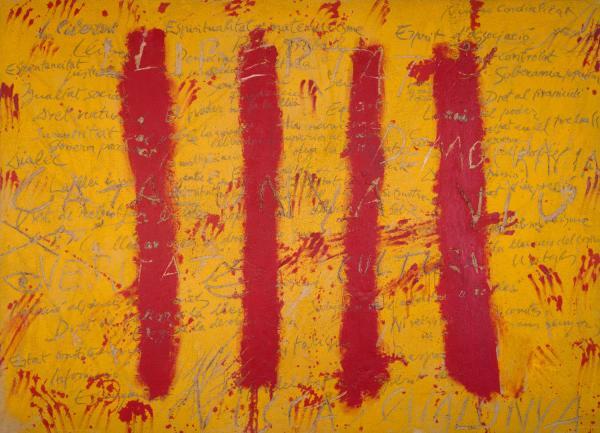
Red Grattage (2008)
We end this summary of the most important works by Tàpies with Red Grattage. In this painting some severed feet appear as amputated limbs of human memory. a work with buddhism influences and in which Tapies reveals his thoughts.

If you want to read more articles similar to Antoni Tàpies: outstanding works, we recommend that you enter our category of History.
Bibliography
- RUIZ, Ivan. Antoni Tapies (1923-2012). In Annals of the Institute of Aesthetic Research. National Autonomous University of Mexico, Institute of Aesthetic Research, 2012. p. 211-218.
- TÀPIES, Antoni; CHALUMEAU, Jean Luc. Antoni Tapies. Polygraph Editions, 2004.
- Tapies, Antoni. Antoni Tápies: art and spirituality. Editions T, 1988.

